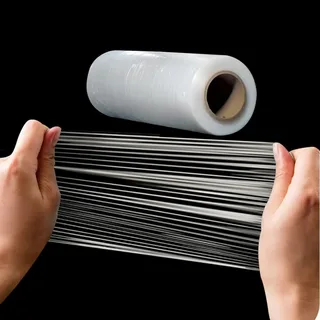Shrink wrapping is a widely used packaging technique known for its ability to protect products while giving them a clean, professional appearance. Whether you’re packaging items for retail, shipping, or storage, understanding the right techniques can make all the difference. In this guide, we’ll explore practical tips to help you master the art of shrink wrapping and achieve a flawless seal every time.
Why Shrink Wrapping Matters
Shrink wrapping involves covering a product with a plastic film, which is then heated to shrink tightly around the item. This method provides several benefits:
- Protection from dust, moisture, and tampering
- Improved product presentation
- Extended shelf life
- Space-saving for shipping and storage
Perfecting this technique not only ensures product safety but also enhances brand credibility and customer satisfaction.
Choosing the Right Materials
To start mastering the art of shrink wrapping, it’s essential to select the appropriate materials for your specific application.
Types of Shrink Film
- PVC (Polyvinyl Chloride): Economical and commonly used for CDs, DVDs, and boxes.
- Polyolefin: Strong, flexible, and FDA-approved for food items.
- Polyethylene: Durable and ideal for bundling larger items like bottles or cans.
Each type has its own shrink temperature and characteristics, so match your film choice with the item being packaged.
Equipment Essentials
For a perfect seal, you’ll need the right tools:
- Sealing Machine: Used to create the initial seal around the product.
- Heat Gun or Tunnel: Applies heat evenly to shrink the film.
- Cutting Tools: For trimming excess film to maintain a neat appearance.
Using well-maintained, high-quality equipment is a key step in mastering the art of shrink wrapping.
Tips for a Perfect Seal Every Time
1. Preheat Your Equipment
Allow your heat gun or shrink tunnel to warm up to the appropriate temperature. Cold equipment often causes uneven shrinking or weak seals.
2. Don’t Overheat
Too much heat can lead to holes, burn marks, or melting. Practice on a few samples to find the right temperature and exposure time.
3. Use Proper Tension
Keep the film snug but not overly tight before heating. Wrapping too loosely may cause wrinkles, while too much tension could tear the film during shrinking.
4. Seal with Precision
Ensure your sealing line is straight and free of gaps. A crooked or partial seal will not only look unprofessional but may also compromise product protection.
5. Inspect and Test
Always examine the final product for complete coverage and a secure seal. Conduct drop or compression tests if necessary for items that will be transported.
By incorporating these tips into your routine, you’ll be on your way to mastering the art of shrink wrap: tips for a perfect seal every time become habits that produce consistent results.
Common Mistakes to Avoid
- Using the wrong film type for the product
- Applying heat too quickly or unevenly
- Neglecting to test seal quality
- Overhandling after wrapping, causing tears
Recognizing and avoiding these errors is just as important as learning the best practices.
Conclusion
Mastering the art of shrink wrapping: tips for a perfect seal every time requires attention to detail, the right materials, and consistent practice. Whether you’re packaging small retail goods or large shipments, a professional-looking, secure wrap can make a significant difference in presentation and product protection.
Invest time in learning the process, choosing the right tools, and refining your technique, and soon you’ll be able to achieve a perfect seal—every time.

